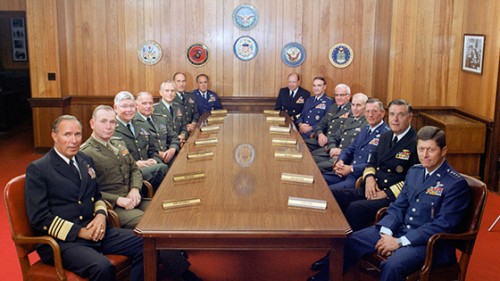Chicago International Film Festival 2015: Where to Invade Next, by Aaron Pinkston
In the six years since his last film, Capitalism: A Love Story, Michael Moore has seen a lot of problems: banking failures, overpopulated prison systems, police brutality, a widening gap between the rich and the poor, etc. etc. etc. Where to Invade Next is his way to tackle many of these issues and more, with a clever high concept idea. Because American militarization has stepped into conflicts for foreign resources (primarily oil), Moore thought he would do the same – invade countries to steal their intellectual resources that could make American society better. Where to Invade Next opens in an alternate reality where the U.S. military leaders come to Moore admitting that they’ve made mistakes over the past few decades and they need help. That may sound fairly self-aggrandizing, but the overall tongue-in-cheek, playful nature gives Where to Invade Next a very entertaining spark.
Through this experiment, Moore finds out rather quickly that the way to do things often feels contradictory to the American way. Italy, for example, gives eight weeks of paid vacation each year to every employee by law, and yet the country ranks as high or higher than the U.S. in productivity rankings. Finland, the known world leader in education, has shorter school days (something like 20-25 hours a week in the younger grades) and more focus on happiness and individuality than standardized test scores. In almost every interaction Moore has with other countries, he sees this kind of trend. Every interaction he has with a new country on a new problem feels like a thought exercise that would take place in political science lectures at a university, but they are actually happening very successfully.
Moore is as sharp as ever and as self-deprecating, playing the part of the American rube to great effect. With the thinly veiled high concept glaze, Moore plays flabbergasted by all the crazy ideas in action, leading to even more humorous reactions from the citizens, politicians and officials from the various countries who don’t understand this American disconnect. Most of Where to Invade Next repeats this interaction formula for a comic and light tone. There are a number of laugh-out-loud moments, including Moore’s stupefied, under-his-breath direct address when he finds out they have modern art in Norwegian high security prisons.
But there is also some hard-hitting political content, especially in the film’s latter half. The most substantial is the trip to Tunisia, a small French colonized country in Northern Africa (interestingly, the only non-European country that Moore visits on the journey). The focus here is less specific, more political theory on the power of protest and democracy in action. After the country’s citizens successfully toppled an oppressive political regime and instilled a democratic leadership, the country had a difficult fight to modernize. The conservative Muslim majority group in the government eventually voted for (yes, for) an equal rights bill that included legalization of abortion because they saw their people wanted it to happen. The party saw the difference between matters of the state and private matters and don’t see it is their place to ban gay marriage or abortion because it simply isn’t seen as a political issue to them.
Like all of the controversial filmmaker’s work, Where to Invade Next has a selectivity problem. Part of the point of the film is to pick one specific aspect of a country that could be used to better American society, so some of that is inherent. Still, it makes these countries look like paradise without going into the actual work that would need to happen to make these changes possible. Though the film doesn’t explicitly say so, it would be even more difficult to try and institute all of these different policies into one society or if it could even work. If I knew more about politics and policy I’d probably be able to poke holes through some of the film’s arguments, but some are pretty easy to recognize. Also, the film’s upbeat style stays away from being bogged down in too many details – we see the end results, but don’t get any concrete exploration into how these things could be instituted. A similar problem exists in the film’s use of charts and statistics, which are shown in ways to maximize their impact in a way that is possibly misleading.
Looking at Where to Invade Next as a treatise more about feeling than specifics, however, it is much more successful and enjoyable than some of Moore’s work. Seeing the myriad of social ills tackled in the film is pretty staggering, enough to really bum me out. If it wasn’t so light and funny it would be seriously depressing. But Moore ends the film with a very positive message, which I wasn’t expecting. Using the metaphor of the Berlin Wall (which Moore tells us he visited during the fateful year of 1989), Moore says he sees how something so oppressive and massive can crumble so quickly. He sees himself as a much more positive person in his older age having already seen his beloved country take positive steps recognizing the problems that exist. Looking back over Where to Invade Next, this positivity does shine through.
Chicago International Film Festival Showtimes:
Friday, October 23, 7:00 pm




























